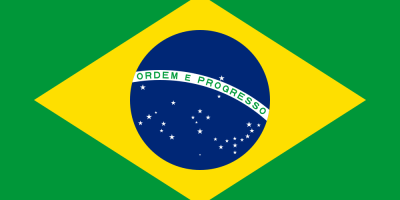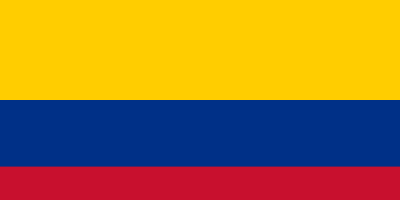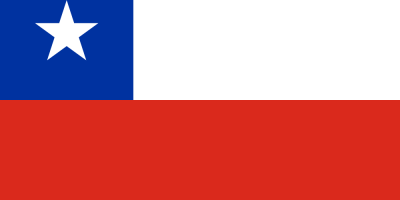Argentina flag color codes consists of three horizontal bands, light blue on top, white in the middle, and light blue on the bottom. These colors hold cultural symbolism and represent the clear skies and snow-capped mountains of Argentina. If you want to accurately display the iconic Argentina flag design in any digital or print project, you’ll need the precise Argentina flag color codes. This guide provides the HTML hex, RGB, Pantone, HSL, CMYK, HWB, and NCOL values for the light blue and white on the Argentina flag. With this handy reference, you’ll have the specific color specifications required to reproduce the Argentine flag in the correct hues. Whether you need the Argentina flag colors for a website, app, print material, or other application, this information will allow you to recreate the iconic flag.
Table of Contents
What are the colors of Argentina flag?
The colors of the Argentina flag are:
- Light Blue – Represents the clear skies and the Rio de la Plata river. The light blue on the Argentina flag is Pantone 2747 C.
- White – Represents peace and unity. The central white band also represents the snow-capped Andes Mountains. It is a pure white color on the flag.
- Light Blue – Same light blue as the top band, matching the sky and Rio de la Plata. The bottom band is also Pantone 2747 C.
The three equal horizontal bands are light blue on the top and bottom, with white in between. The light blue and white colors have been used on Argentina flags since 1818, with the light blue said to be inspired by the ribbons on the Cockade of Argentina.
Some additional symbolic meanings:
- The light blue evokes the Atlantic and Pacific oceans as well.
- The sun of May is sometimes represented on the white band.
- The colors honor Argentina’s clear skies and majestic landscapes.
So in summary, light blue representing the skies and white for the mountains are iconic national symbols of Argentina, displayed on the flag.
Argentina flag color codes & Color Names:
BLUE
| Color Model | Value |
|---|---|
| HTML | #76AADB |
| HEX | 76AADB |
| RGB | 118, 170, 219 |
| PANTONE | Process Blue C |
| HSL | 209°, 60%, 66% |
| CMYK | 46%, 22%, 0%, 14% |
| HWB | 209°, 7%, 14% |
| NCOL | #6D98C0 |
WHITE
| Color Model | Value |
|---|---|
| HTML | #FFFFFF |
| HEX | FFFFFF |
| RGB | 255, 255, 255 |
| PANTONE | Safe |
| HSL | 0°, 0%, 100% |
| CMYK | 0%, 0%, 0%, 0% |
| HWB | 0°, 100%, 0% |
| NCOL | #FFFFFF |
YELLOW
| Color Model | Value |
|---|---|
| HTML | #FFD100 |
| HEX | FFD100 |
| RGB | 255, 209, 0 |
| PANTONE | 1235 C |
| HSL | 48°, 100%, 50% |
| CMYK | 0%, 18%, 100%, 0% |
| HWB | 48°, 0%, 0% |
| NCOL | #FFBE00 |
What is the meaning of colors in the Argentina flag?
The colors of the Argentina flag represent the following:
Light Blue – Represents the clear skies and the Rio de la Plata river. The light blue evokes the expansive skies over Argentina and the major river of the region.
White – Represents peace, unity, and the snow-capped Andes Mountains. The white band signifies a desire for harmony among Argentines and evokes the towering Andes peaks.
Light Blue – Matches the top band in representing the skies and waters of Argentina. The light blue repeats this national symbolism.
Some additional symbolic meanings:
- The light blue can also represent the Atlantic and Pacific oceans which border Argentina.
- The sun of May, an important national symbol, is sometimes depicted on the central white band.
- The colors connect to the ribbons on the cockade used during the Argentine War of Independence.
So in summary:
- Light blue symbolizes the clear skies and waters of Argentina.
- White signifies peace, unity, and the majestic Andes Mountains.
- Together these colors on the flag evoke Argentina’s natural beauty and national spirit.
The iconic light blue and white bands are a simple but meaningful representation of Argentina’s landscapes and values.
Explore More Flag Colors:
FAQs: Frequently Asked Questions:
What is Argentina famous for?
Argentina is famous for various aspects, including:
Tango: Argentina is the birthplace of the tango, a passionate and expressive dance that originated in the working-class neighborhoods of Buenos Aires. Tango music and dance have gained international acclaim, and Argentina remains a significant hub for tango enthusiasts.
Mate: Mate is a traditional South American beverage made from the leaves of the yerba mate plant. In Argentina, sharing mate is a social and cultural activity, and it’s common to see people enjoying mate in public spaces.
Soccer (Football): Argentina has a strong soccer culture, and the country has produced some of the world’s greatest soccer players, including Diego Maradona and Lionel Messi. The national team has won multiple international titles, including the FIFA World Cup.
Beef and Asado: Argentina is renowned for its beef and the traditional barbecue known as “asado.” The country is a major producer and exporter of beef, and asado gatherings are a social event where friends and family come together to enjoy grilled meat.
Patagonia: The region of Patagonia in southern Argentina is known for its stunning landscapes, including glaciers, mountains, and pristine lakes. Popular destinations include the Perito Moreno Glacier and the Torres del Paine National Park.
Is Argentina is a European country?
No, Argentina is not a European country. Argentina is a country located in South America, and it is the second-largest country on the continent. It shares borders with several South American countries, including Chile, Bolivia, Paraguay, Brazil, and Uruguay.
What is the old name of Argentina?
Before the arrival of European explorers, the indigenous peoples of the region now known as Argentina had various names for their territories. However, the modern nation of Argentina gets its name from the Latin word “argentum,” meaning silver.
Is Argentina good country to live in?
Here are some factors to consider:
Positive Aspects:
Cultural Richness: Argentina has a vibrant cultural scene with a strong emphasis on the arts, music, literature, and dance. The country has produced internationally acclaimed writers, musicians, and artists.
Natural Beauty: Argentina boasts diverse landscapes, including the Andes Mountains, Patagonian glaciers, Iguazu Falls, and vast plains. The country offers opportunities for outdoor activities and exploration.
Culinary Delights: Argentine cuisine is known for its beef, asado (barbecue), empanadas, and wines. Food enthusiasts may appreciate the rich gastronomic culture.
Cost of Living: In comparison to some Western countries, the cost of living in Argentina can be relatively lower, especially when it comes to everyday expenses and entertainment.
Friendliness of Locals: Many visitors and expatriates note the friendliness and warmth of the Argentine people. The culture places value on social connections and gatherings.
Education and Healthcare: Argentina has reputable universities, and public education is free. The country also offers a public healthcare system, and private healthcare options are available.
Challenges:
Economic Challenges: Argentina has experienced economic fluctuations and inflation, which can impact the cost of living and financial stability.
Political and Social Unrest: The country has seen periods of political and economic instability, and there have been instances of social protests and demonstrations.
Language Barrier: While many Argentinians speak Spanish, language barriers can be a challenge for those who do not speak the language fluently.
Crime Rates: In certain urban areas, there may be concerns about crime rates, and expatriates are often advised to take precautions.
Bureaucracy: Dealing with bureaucratic processes can be time-consuming, and it may require patience to navigate administrative procedures.
What is Argentina rich for?
Argentina is known for being rich in various aspects, including:
Agriculture and Livestock: Argentina is a major player in the global agricultural sector. The country is known for its vast agricultural lands and is a significant producer and exporter of commodities such as soybeans, corn, wheat, and beef.
Natural Resources: Argentina possesses abundant natural resources, including minerals and energy resources. The country has reserves of minerals like lithium, copper, and gold, and it is one of the world’s leading producers of lithium.
Biodiversity: Argentina is rich in biodiversity, encompassing diverse ecosystems ranging from the Andes Mountains to the Patagonian steppes. The country is home to unique flora and fauna, making it a destination for ecotourism.
Renewable Energy Potential: Argentina has vast renewable energy potential, particularly in wind and solar power. The country is making efforts to develop and expand its renewable energy capacity.
Cultural Heritage: Argentina has a rich cultural heritage influenced by indigenous peoples, European immigrants, and diverse communities. The country is known for its contributions to literature, music, dance (including the tango), and the visual arts.
What language is spoken in Argentina?
The official language of Argentina is Spanish. Spanish is spoken by the vast majority of the population and is used in government, education, media, and daily communication. The Spanish spoken in Argentina has some distinctive features and regional variations, often referred to as Rioplatense Spanish.
Is Argentina a rich country?
The country is rich in various aspects:
Agricultural Wealth: Argentina is a major player in the global agricultural sector. It is one of the world’s leading producers and exporters of commodities such as soybeans, corn, wheat, and beef.
Natural Resources: Argentina has abundant natural resources, including minerals and energy resources. The country is known for its reserves of minerals like lithium, copper, and gold.
Biodiversity: Argentina is rich in biodiversity, housing diverse ecosystems, flora, and fauna. This makes it a destination for ecotourism.
Renewable Energy Potential: Argentina has vast renewable energy potential, particularly in wind and solar power.
Cultural Heritage: Argentina has a rich cultural heritage, contributing significantly to literature, music, dance (including the tango), and the visual arts.
Is Argentina a English speaking country?
No, Argentina is not an English-speaking country. The official and predominant language of Argentina is Spanish. Spanish is used in government, education, media, and daily communication throughout the country.
Is Argentina cheap country?
Argentina has experienced economic fluctuations and inflation, and the cost of living can vary depending on various factors, including the region, lifestyle, and personal spending habits. It’s essential to note that economic conditions can change, and the information provided here might not reflect the current situation.













